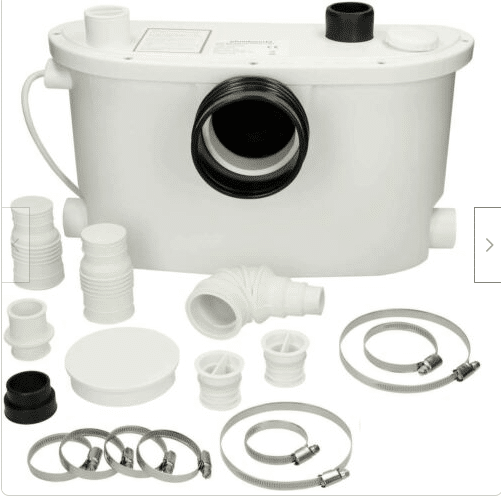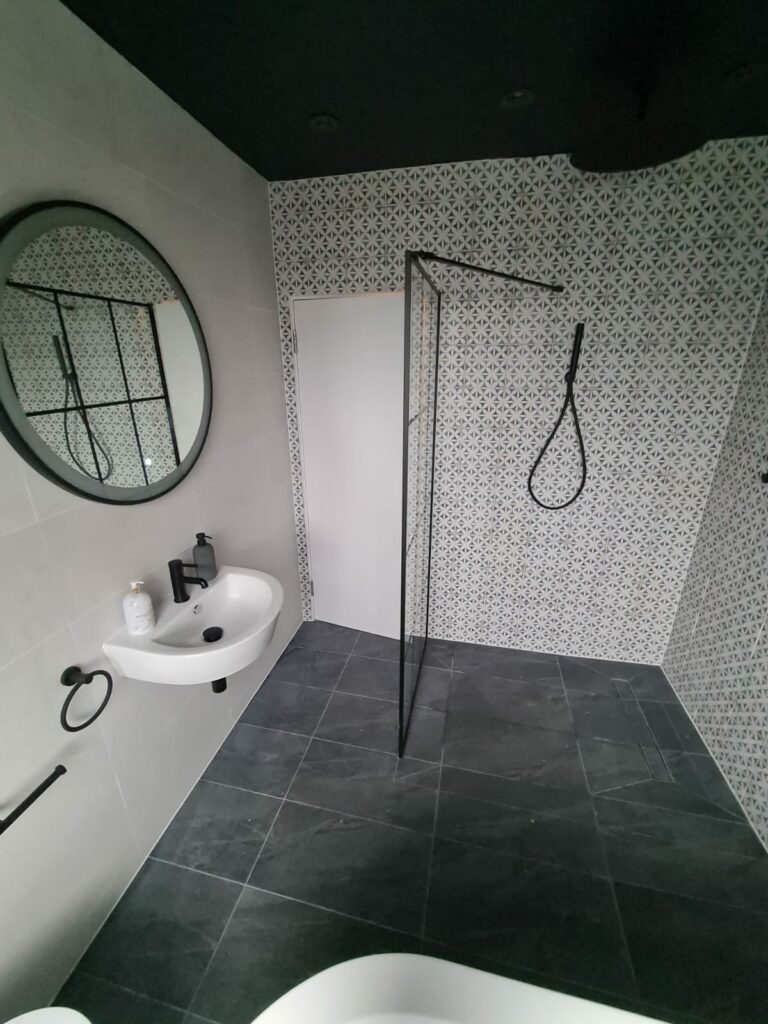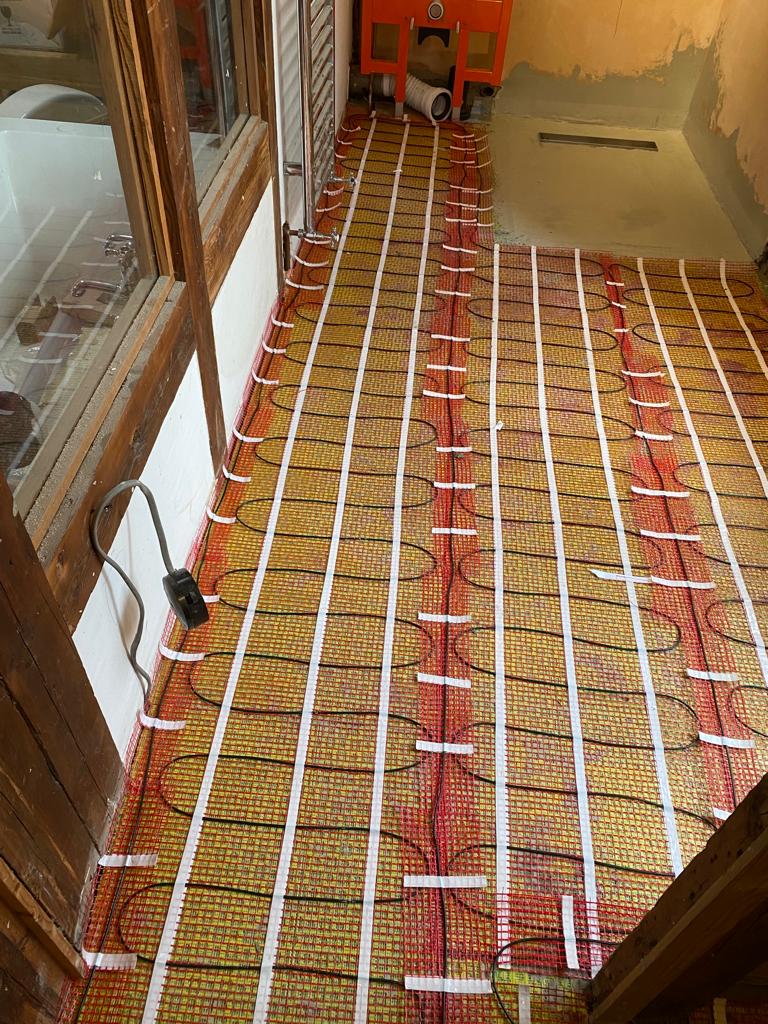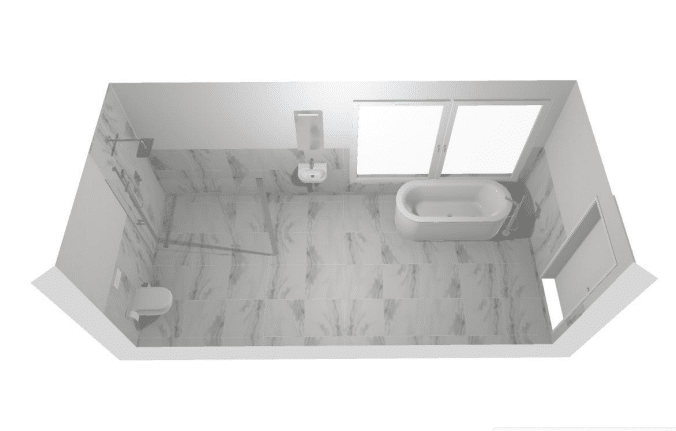Are you planning a bathroom renovation and feeling overwhelmed by the different types of tile adhesives available? It’s essential to choose the right one to ensure your tiles stay in place and look great for years to come. One important factor to consider is the flexibility of the adhesive.
Did you know that S1 and S2 tile adhesives have added flexibility, with S1 having a deformability of between 2.5mm and 5mm? Understanding this can help you make an informed decision when choosing the right adhesive for your bathroom renovations.
In this blog post, we’ll break down the differences between flexible and non-flexible tile adhesives, helping you navigate through the options to find what works best for your project. Stick around to discover how choosing the right adhesive can make all the difference in your bathroom renovations.
Importance of choosing the right tile adhesive for bathroom renovations
Picking the perfect tile adhesive can transform your bathroom renovation from shaky to secure. Different adhesives offer varying levels of flexibility, crucial for areas exposed to moisture and temperature changes like bathrooms.
An S1 flexible tile adhesive combats potential cracks by accommodating slight movements – think thermal expansion or house settling – ensuring tiles stay put and look pristine longer.
Selecting a top-notch cement-based or flexible adhesive means grappling with grout becomes a breeze, not a battle. You want an adhesive that resists shrinkage, adjusts to underfloor heating fluctuations, and grips firmly even on wooden floors.
Each choice impacts installation ease, waterproofing quality, and the overall durability of your bathroom’s new look. So go beyond aesthetics – robust adhesives are key for lasting beauty in your bathroom haven.
Flexible Tile Adhesive vs Non Flexible Tile Adhesive
Flexible tile adhesive offers greater deformability and movement resistance, making it suitable for areas with high thermal and physical movement. On the other hand, non-flexible tile adhesive is more rigid and may not be appropriate for surfaces that are prone to shifting or movement.
Differences in strength and flexibility
Flexible tile adhesives, such as those classified as S1 and S2, cater to various stresses by stretching between 2.5mm and 5mm. This capability allows them to absorb thermal and physical movement without cracking or compromising the integrity of the tiles.
They are particularly vital for surfaces that experience fluctuations in temperature or have a tendency to shift slightly, like underfloor heating systems or wooden floor substrates.
Non-flexible cement-based adhesives offer a sturdy bond that resists heavy loads but lacks deformability. These rigid adhesives ensure tiles remain fixed in place under normal conditions; however, they might fail when faced with significant movements or shifts within a structure.
For bathroom renovations where moisture levels fluctuate and surfaces may expand or contract, choosing an adhesive with suitable flexibility is crucial for long-lasting tile installation.
Considerations for different surfaces and conditions
When choosing tile adhesive for bathroom renovations, it is crucial to consider the specific surface and conditions. For underfloor heating and wooden floors, S1 and S2 adhesives with added flexibility are suitable options.
These adhesives can withstand thermal and physical movements while maintaining strong adhesion. Additionally, a powdered adhesive is generally preferred for most bathroom renovation projects due to its durability and resistance to deformations.
It’s important to choose an adhesive that offers low shrinkage properties as it provides lasting strength and flexibility, especially in areas prone to movement. Moreover, the non-slip qualities of many adhesives ensure stability when fixing tiles on different surfaces during a renovation project.
Choosing the Right Tile Adhesive for Your Bathroom Renovations
Considerations such as the type of surface, conditions in the bathroom, and desired flexibility will help you choose the best adhesive for your renovation. Different types of adhesives cater to specific situations, so it’s important to weigh your options carefully before making a decision.
Factors to consider
When selecting tile adhesive for bathroom renovations, it is important to consider the deformability and flexibility of the adhesive. S1 and S2 adhesives provide added flexibility, with S1 having a deformability of between 2.5mm and 5mm, making them suitable for coping with thermal and physical movements in the bathroom.
Additionally, opt for adhesives with low shrinkage properties as they offer stronger adhesion and better flexural strength. Moreover, ensure that the chosen adhesive is compatible with all types of tiles and stones used in your renovation project.
Furthermore, it’s crucial to consider the specific requirements of your renovation project when choosing a tile adhesive. For instance, if you are working on underfloor heating or wooden floors in your bathroom, selecting an adhesive suitable for these surfaces such as S1 or S2 adhesives would be advantageous.
Best options for specific situations
For bathroom renovations involving underfloor heating, S1 and S2 tile adhesives are the best options due to their thermal and physical movement resistance. These adhesives provide the necessary flexibility to accommodate the shifting nature of floors with underfloor heating systems.
When renovating bathrooms with wooden floors, it is essential to use tile adhesives specifically designed for this purpose. These adhesive types offer the needed deformability and flexibility required for wooden surfaces, ensuring a secure bond that can withstand movement without compromising the integrity of the tiles.
In cases where beginners are handling tiling projects, opt for a beginner-friendly tile adhesive that offers ease of application without sacrificing bonding strength. Consider powdered adhesives as they are generally easier to work with and provide reliable results in various renovation scenarios.
Conclusion
When choosing the right tile adhesive, consider the deformability and flexibility for lasting beauty. Adhesives with low shrinkage properties provide stronger adhesion with thermal and physical movements.
S1 and S2 adhesives are suitable for underfloor heating and wooden floors, safeguarding against tile adhesive failure by coping with smaller deformations. Flexibility in tile adhesives is crucial for matchless performance in bathroom renovations, making a significant difference in the tiling process.
FAQs
1. What is the main difference between flexible and non-flexible tile adhesives?
Flexible tile adhesive can handle thermal and physical movement, making it suitable for underfloor heating systems and wooden floor tiling, while non-flexible adhesive offers a solid bond but less deformability.
2. When should I use a flexible tile adhesive in my bathroom renovation?
Use a flexible adhesive if your bathroom has underfloor heating or you’re applying tiles to wooden floors because it’s designed to resist movements without cracking.
3. Can any type of tile adhesive work for flooring renovations?
Not all types are suitable; cement-based adhesives may not offer the needed flexibility for certain conditions like underfloor heating or wooden subfloors – choose an appropriate type based on specific renovation materials and conditions.
4. How does using the right tile adhesive affect my bathroom remodeling project?
Choosing the correct adhesive ensures long-lasting bonding of tiles, reducing risks of damage due to thermal changes or physical force, leading to secure tile applications.
5. Are there beginner-friendly options when selecting a tile adhesive for construction?
Yes, some products are formulated with easy application in mind which helps beginners complete their flooring renovation effectively without prior extensive experience in tiling.









